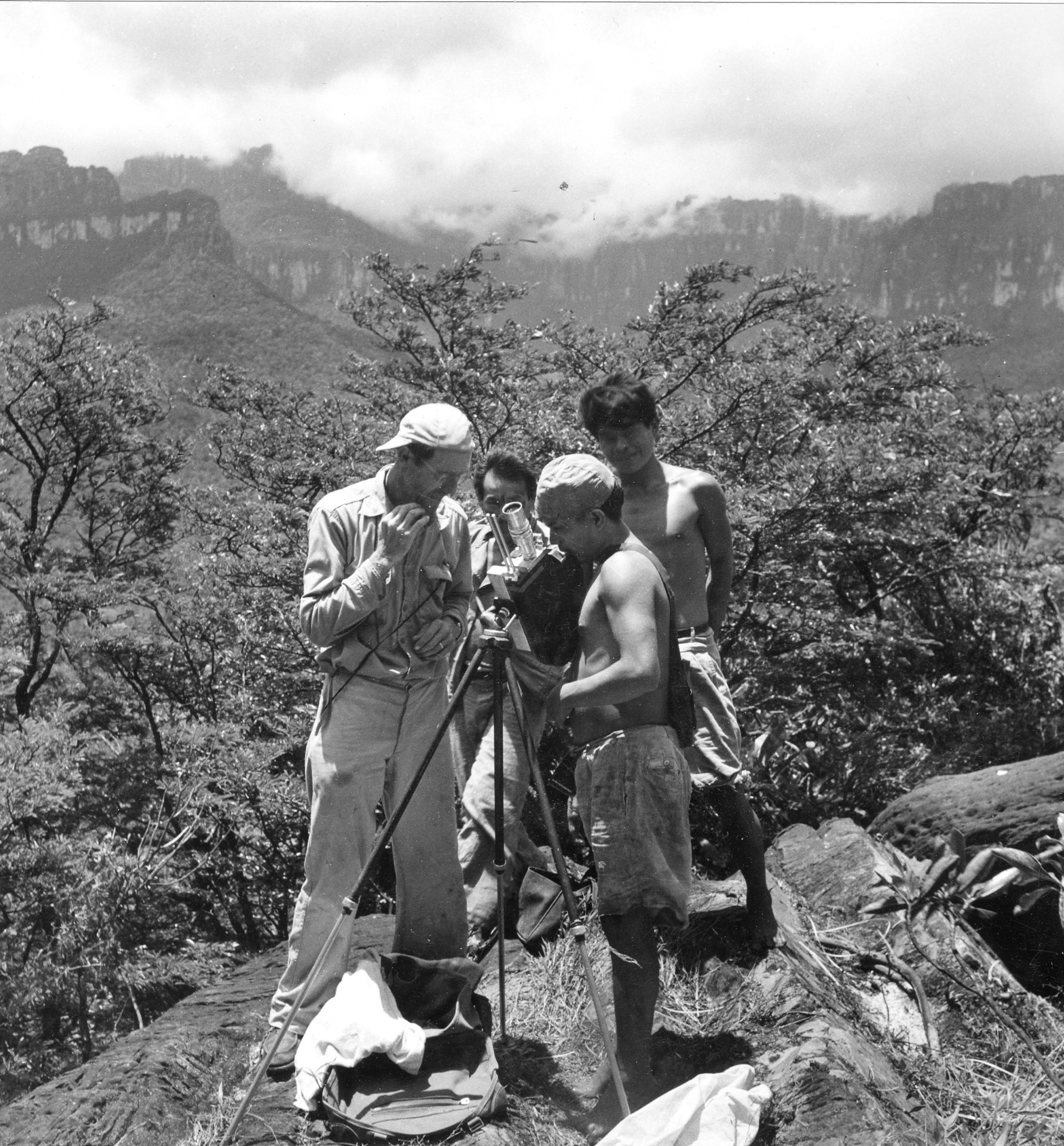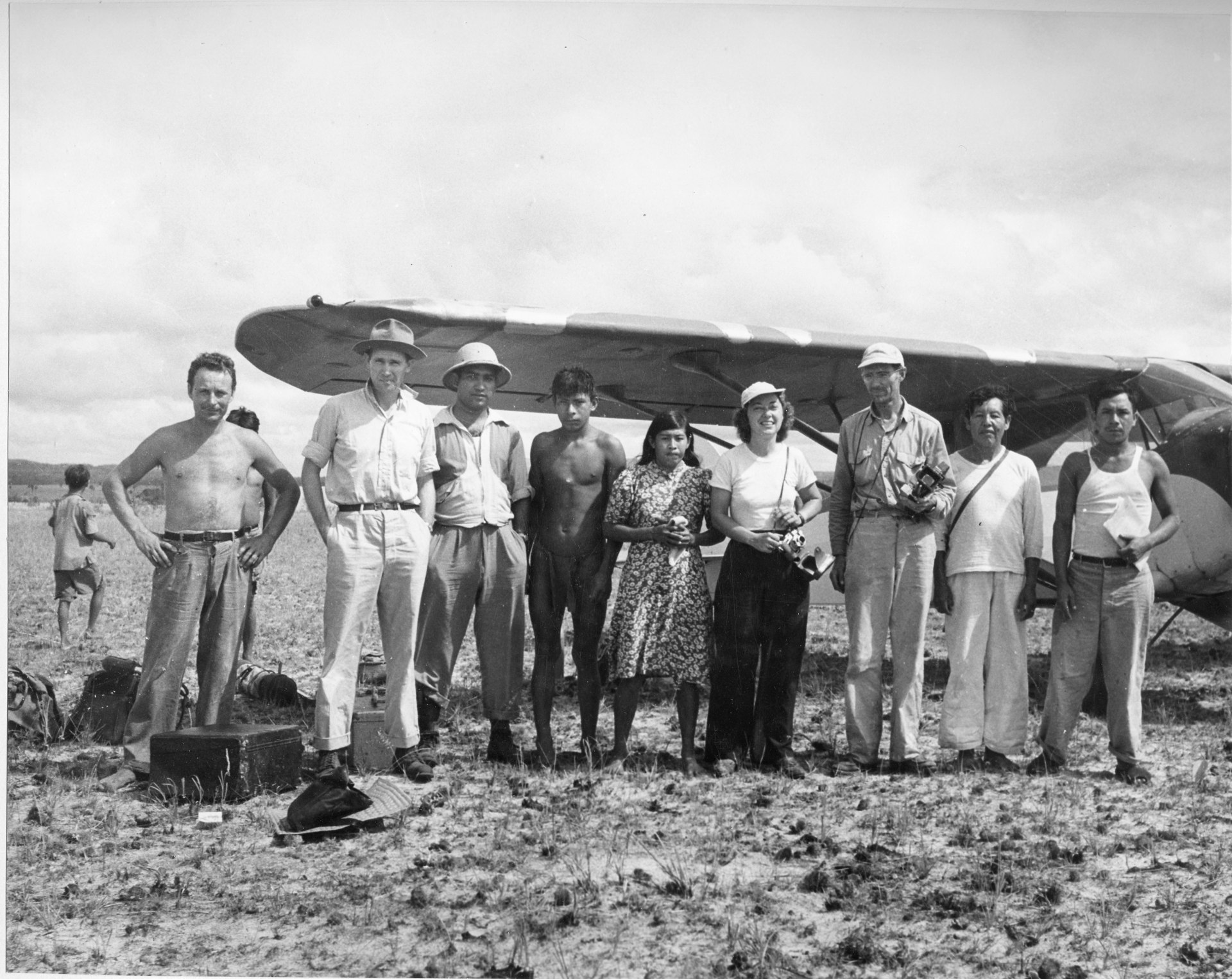
The Forgotten Expedition
May 1949
“Curiara” in the Río Carrao on its way to Angel Falls
Woman spinning cotton in Kamarata
As in Alaska, Ruth found Venezuela a mainly unexplored country, full of untold stories and unphotographed marvels. No sooner had she unpacked when she was greeted with a revolution. Then, in less than two weeks she started to see the dissolution of the big plans at Linea Aeropostal Venezolana. While the newly hired pilots were negotiating for severance pay and transport back to the U.S., Ruth negotiated for something else. She envisioned hundreds of places to be seen, stories to be written and photographs to be taken. The severance deal she cut was for freedom to fly between New York and Caracas for a year to sell her work. In her book, Churun Meru – The Tallest Angel, she wrote:
Kamaracoto woman
"...here was a whole chunk of the northern part of this continent to be explored and articles to be written and photographs to be taken and marketed in U.S. magazines. I felt confident, after my successes in Alaska the year before that the frontier countries were where the good stories were to be found."
She was soon hard at work off the coast of Venezuela doing a film on pearl diving for the Venezuelan Ministry of Development. Then she secured a contract with Shell Pipeline Company to make a film about building a pipeline under Lake Maracaibo. For Shell and Creole Oil (Standard Oil) she produced color calendars, documenting their oil fields and drilling operations around the country, and wrote and illustrated articles for their magazines. In 1947, on a flight into the remote jungle interior below the Orinoco River, Ruth saw Angel Falls for the first time.
Reyes, a Kamaracoto who helped portage the expedition
"The first glimpse of Angel Falls left a lump in my throat. A stunningly beautiful sight, it plunged from niches two or three hundred feet from the top in two parts, one a mighty force of water and, on its right, another ribbon fall. It was a wonderful sight, but definitely not the right camera angle. Undoubtedly, that was when the idea of some day getting to the bottom of the waterfall was conceived. The majesty of such a tremendous sight would have to be photographed looking up at it, not condescendingly down."
Hidden from the outside world until 1935, Angel Falls had never been surveyed. Jimmie Angel said it was "a mile high." Scientific journals listed it as "height unknown." Ruth decided to prove its height once and for all.
Boy holding “aimara” fish
Launching this expedition was a challenge of considerable magnitude, both logistically and financially. Never having planned, nor led, an expedition, Ruth approached who she felt would have the most obvious interest, National Geographic. They turned her down flat. The reason: four expeditions had previously tried to reach the falls and failed, some members never returning. What chance would she have, a woman. Her only solace was an agreement to look at her story if she happened to succeed.
After two years of meticulous planning, on April 23rd, 1949 the expedition to Angel Falls got underway. It was decided that the tiny band would travel by DC-3 to a staging area in the Gran Sabana, in the Valley of Kamarata, and from there travel one at a time by Cub Cruiser (piloted by Ruth's friend Oley Olsen/bush pilot), to a point where the group would be met by Alexander Laime, a Latvian ex-patriot, who had done some scouting in the jungles along the Churun and Caroni Rivers. Laime would hire Kamaracoto Indians (native to that area) to act as porters and guides.
Traveling by dugout and by foot to the base of the falls, Ruth's mission was two-fold: first, to measure the falls to determine once and for all if it was the highest in the world, and second, to get the first photographs of the highest waterfall in the world -- from the ground. The results of her adventure were printed in National Geographic, November 1949. Further accounts appeared in Time and Newsweek as well as every major newspaper in the world.
Ruth Robertson’s vast archive, spanning over 50 years, was acquired by the Harry Ransom Humanities Research Center at University of Texas at Austin where it is available to view. An exhibition of Robertson’s photographs of the expedition opened at the University in July 1993.
“Since photography’s beginnings, the medium has continually provided a sense of exploration - whether through arduous terrains that extend from the jungle to the darkroom, or in witnessing the complexities which range from the faces of human society to the nuances of the human heart. Ruth Robertson is no stranger to all these places and her imagery will continue to supply revelation and challenge to future generations of all manner of explorers.”
Roy L. Flukinger, Senior Research Curator, Reader and Viewer Services, HRHRC































